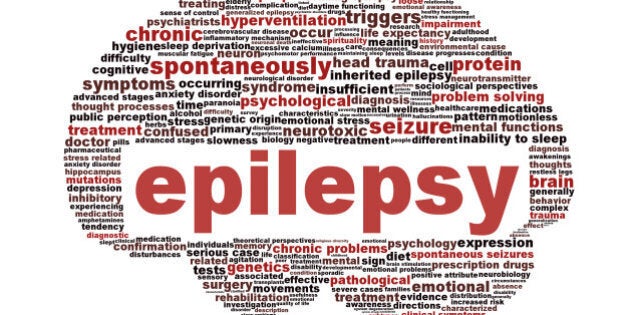
Epilepsy is a common neurological condition. Chances are you know someone who has the condition. In spite of ongoing public awareness and education programs, many myths still exist. It's time to bust some of those myths today!
Myth #1: Epilepsy is rare.
Actually, epilepsy is more common than many people realize. One in 100 Canadians has epilepsy. About 18,000 Canadians are diagnosed with this neurological disorder each year. An epilepsy diagnosis indicates two things: 1) the person has had a one or more seizures and 2) they have an increased risk of experiencing another seizure.
Myth #2: There is only one type of seizure.
Most people associate the term "seizure" with a convulsive seizure. You've likely seen this type of seizure in TV shows and movies. When someone has a convulsive seizure, they'll go unconscious. At first their muscles will stiffen, and then their entire body will jerk rhythmically. This is just one of many seizure types.
Did you know that there are more than 40 types of seizures? The way that seizures look varies greatly depending on the seizure type and the brain networks involved in the seizure. Some seizures resemble daydreaming and last only a few seconds. Other seizures cause a brief visual disturbance, or a tingling or numbness sensation, or an uncontrollable twitching in a region of the body, or a brief inability to communicate, or a sudden change in mood. Depending on the type of seizure someone has, they may lose consciousness, have a change in awareness, or their consciousness and awareness may not be affected at all. The look and experience of seizures can be as varied as the functions of our brains.
Myth #3: Only children develop epilepsy.
This is a long-standing myth, but in fact, epilepsy can begin at any time in a person's life. Seniors and young children have the highest rates of developing epilepsy. The types of epilepsy, including the most common causes and seizure types, can vary depending on the age group. Brain injury at any point in life can increase the risk of epilepsy, although the onset of seizures may begin months or years later. Genetic causes of epilepsy tend to result in an earlier age of onset, during infancy, childhood, or adolescence. There are some genetic epilepsy disorders that have an onset in adults. Cerebrovascular causes of epilepsy, such as stroke, are more common in seniors accounting for at least one-third of new onset epilepsy in this age group.
Myth #4: People with epilepsy cannot drive.
Here's some good, and perhaps surprising, news: 65-70 per cent of adults with epilepsy drive safely and legally. People who have uncontrolled seizures or are newly diagnosed with epilepsy may initially lose their driver's license. However, many of them can get their license reinstated once they meet several criteria. The laws about driving for people with epilepsy vary from province to province. In several provinces, people with epilepsy can get their license back if they've been seizure free for at least six months, they're taking anti-seizure medication as prescribed, and their doctor supports them driving. In other provinces, a person with epilepsy must be seizure free for at least a year before they can apply to get their driver's license reinstated with their doctor's support.
The length of time since a person's last seizure is not the only deciding factor. The class of driver's license and the type of seizures a person has are just a couple of the many factors that can affect whether or not a person with epilepsy can legally drive. For example, if a person only has seizures while they are sleeping, they may be eligible to drive during the day on their doctor's recommendation.
Myth #5: Epilepsy and intellectual disability go hand in hand.
The fact is anybody can have epilepsy. Epilepsy knows no boundaries. People with intellectual disabilities have a higher risk of developing epilepsy than the general population, but a person with epilepsy doesn't have a higher risk of having an intellectual disability.
Myth #6: Epilepsy is caused by supernatural forces.
Yes, some people still believe this. Let's put a stop to it now. Epilepsy is indeed a brain disorder -- there is nothing supernatural going on. Seizures have been documented since the time of ancient civilizations. Early civilizations developed explanations for many things they did not understand; many of their explanations involved a god. Epilepsy used to be known by other names including the "sacred disease," and seizures were often explained by demonic possession or intervention by the gods. The understanding that epilepsy is in fact a brain disorder began more than 2,400 years ago when Hippocrates postulated that the epilepsy had a natural cause and was no more divine or sacred than other diseases. Modern neurology and neuroscience has proven Hippocrates correct, but the myth persists in some circles.
Now that we've busted some common myths about epilepsy, you have the tools to stop the spread of harmful misinformation. The best thing you can do is educate yourself. To find out more, visit epilepsyontario.org or contact your local epilepsy agency.
By: Suzanne Nurse, PhD. Suzanne Nurse is Epilepsy Ontario's Epilepsy Information Specialist.